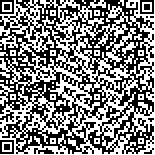王群,谢斌,黄真,潘冰玉,靳婷婷,罗春,王翠.脑卒中偏瘫患者上肢运动功能障碍的生物力学机制研究[J].中华物理医学与康复杂志,2017,39(10):727-731
扫码阅读全文

|
| 脑卒中偏瘫患者上肢运动功能障碍的生物力学机制研究 |
| The biomechanics of hemiplegic stroke survivors′ upper limb motor function |
| |
| DOI: |
| 中文关键词: 脑卒中 偏瘫 够物 运动学 表面肌电 |
| 英文关键词: Hemiplegia Stroke Reaching Kinematics Electromyography |
| 基金项目:国家自然科学基金资助项目(81272166) |
|
| 摘要点击次数: 6046 |
| 全文下载次数: 8495 |
| 中文摘要: |
| 目的 探讨脑卒中患者偏瘫侧上肢运动功能障碍的运动学及肌电学特征。 方法 选取39例脑卒中偏瘫患者和25例健康人分别纳入实验组和对照组。应用穿戴式微型传感器运动捕获系统和表面肌电技术采集受试者上肢前屈够物时的三维运动学数据和表面肌电信号,经处理后提取5个运动学参数,即躯干扭转度、肩关节活动度、运动速度、等张失稳度和等长失稳度,同时还对比分析肌电学特征,包括积分肌电值(iEMG)和肌肉做功比。将前屈够物过程分为前屈阶段和维持阶段,分别比较实验组和对照组在前屈阶段运动学参数和2个阶段的肌电参数,并分析实验组运动学参数与肌电参数间的相关性。 结果 ①实验组患侧躯干扭转度、等张失稳度和等长失稳度明显大于对照组,而肩关节活动度及运动速度均明显小于对照组,组间差异具有统计学意义(P<0.05)。②实验组在够物前屈阶段其偏瘫侧上肢斜方肌上部iEMG值明显大于对照组,而三角肌前束和肱三头肌iEMG值明显小于对照组,组间差异具有统计学意义(P<0.05);三角肌中束和肱二头肌iEMG值组间差异无统计学意义(P>0.05);三角肌前束/斜方肌上部做功比和三角肌前束/中束做功比均小于对照组,肱二头肌/肱三头肌做功比大于对照组,组间差异均具有统计学意义(P<0.05)。③够物维持阶段,实验组与对照组各肌肉iEMG值及肌肉做功比统计结果与前屈阶段一致。④躯干扭转度与斜方肌上部iEMG值呈正相关(r=0.359,P<0.05);肩关节活动度与三角肌前束iEMG值呈正相关(r=0.366,P<0.05);运动速度与三角肌前束iEMG值呈正相关(r=0.344,P<0.05)。 结论 脑卒中患者偏瘫侧上肢在够物过程中其运动学参数及表面肌电参数均出现异常特征性改变,上述指标可用于运动功能障碍定量评估及康复治疗指导。 |
| 英文摘要: |
| Objective To document the kinematics of upper-limb motor dysfunction among hemiplegic stroke survivors. Methods Thirty-nine stroke survivors with hemiplegia were selected as the experimental group, while twenty-five healthy counterparts were chosen as the control group. Reaching movements performed in the sagittal plane were divided into an anteflexion phase and a holding phase. Three-dimensional kinematics data were captured using a micro-sensor motion capture system, and surface electromyograms (sEMGs) were recorded synchronously from the upper trapezius (UT), the anterior (AD) and middle (MD) segments of the deltoid, the biceps brachii (BB) and the triceps brachii (TB). The torso twist (TTD), the range of motion (ROM) of the shoulder, movement velocity (MV), isotonic instability degree (IT) and isometric instability degree (IM) were extracted. Integrated electromyography (iEMG) and work ratios were chosen as indicators to compare the two groups. The experimental group′s kinematic indicators were correlated with that group′s sEMG parameters. Results The average TTD, IT and IM in the experimental group were significantly larger than those of the control group, while the ROM of the shoulder and the MV were significantly smaller. During the anteflexion phase, the average iEMG from the UT in the experimental group was significantly larger than that of the control group, while the average iEMGs from their AD and TB were significantly smaller; The BB/TB work ratios in the experimental group were significantly greater than those of the control group, while the AD/UT and AD/MD ratios were significantly smaller. The results during the holding phase were similar. In the experimental group, torso twist was found to be positively correlated with the iEMG of the UT, and the ROM of the shoulder and movement velocity were also positively correlated with the iEMG of the AD. Conclusions Kinematics variables and sEMG features can be used to evaluate the motor dysfunction of hemiplegic stroke patients′ affected upper limbs quantitatively and provide guidance for rehabilitation. |
|
查看全文
查看/发表评论 下载PDF阅读器 |
| 关闭 |
|
|
|